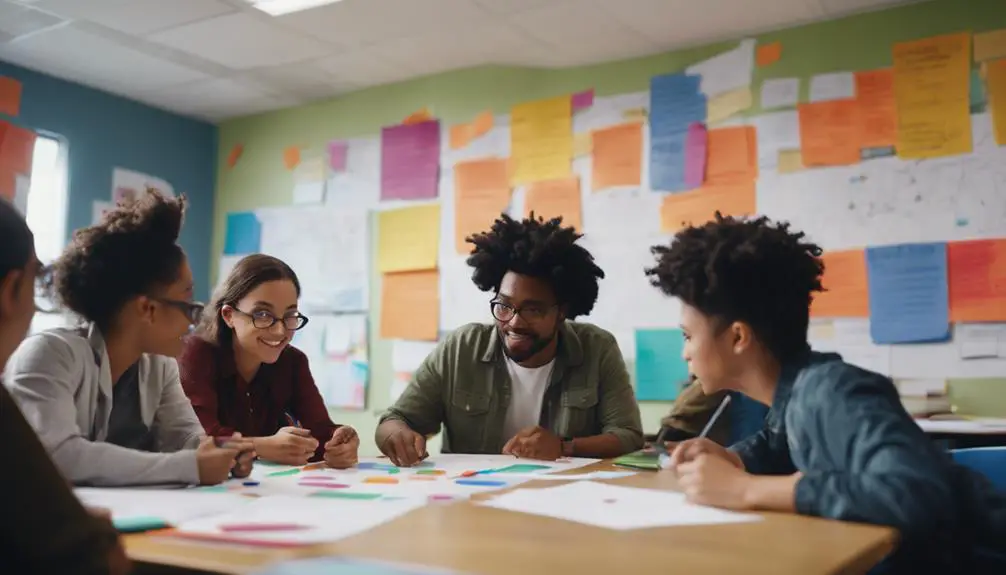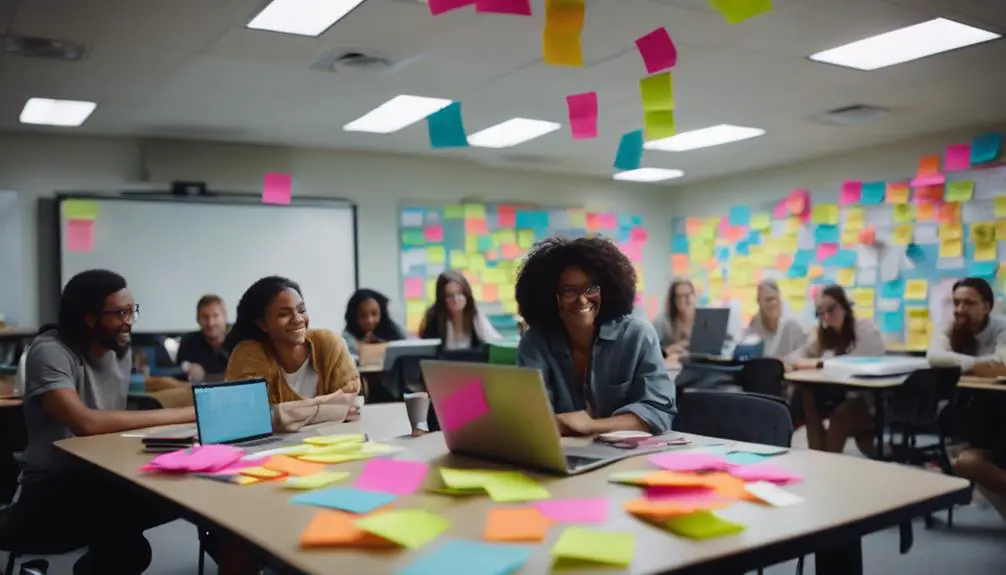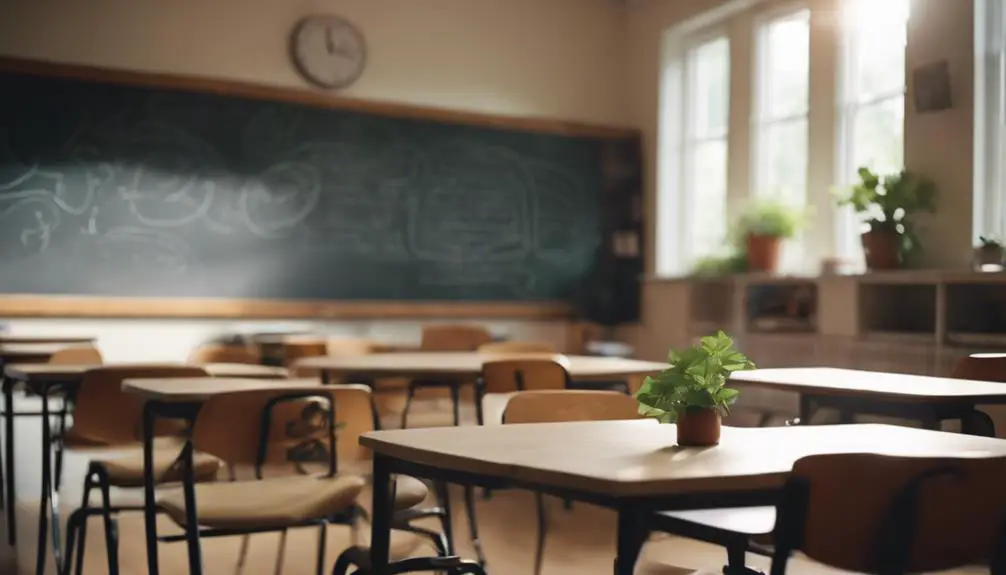Teaching gratitude to students can be an effective way to promote happiness and well-being. In addition, teaching gratitude can help students better understand their own emotions and how those emotions impact their lives.
There are a few ways to introduce gratitude into the classroom setting. One approach is to have students write down five things they are grateful for each day. Another approach is to have students share an experience that made them happy during the past week.
Teaching gratitude can have a profound impact on student motivation and success. It can also create a more positive and connected school community. Moreover, teaching gratitude can help create a more positive environment in which students can learn and thrive.
What is Gratitude?
Gratitude is a thankful appreciation for what someone has done or given. It is a feeling of thankfulness and joy in response to receiving something good. Grateful people recognize the good in their lives and appreciate their blessings. Gratitude helps people feel happy and satisfied with their lives.
Gratitude is an important part of a person’s life. It can help to build relationships and make people happier; it can even improve mental health. Teaching gratitude in the classroom can help students learn how to be grateful for the good things in their lives as well as the bad.
One way to teach gratitude is by having students keep a daily journal. In this journal, students should write down three good things that happened that day, as well as one thing they are grateful for. This exercise can help students focus on the positive aspects of their lives and can also help them develop a better attitude.
Gratitude teaches children how to be thankful for what they have instead of always wanting more. This is a valuable life lesson that can carry over into adulthood. Also, teaching gratitude helps foster a sense of community in the classroom. When children learn to be grateful for what they have, they are also more likely to appreciate what others have to offer.
Why Is Gratitude Important?
Gratitude is one of the most important virtues to cultivate in students’ lives. It has been shown to lead to positive emotions, improved mental health, and increased happiness. Gratitude has the power to change students’ perspectives on life, make them more compassionate, and make them happier.
Why is it so important for students to learn how to be grateful? Gratitude helps students cultivate a positive outlook on life. When students are grateful for what they have, it can help them be more content with their current situation.
It also encourages students to think about the good in life instead of focusing on the bad. It can help them connect with other people and create lasting relationships.
Finally, gratitude makes students happier in the short-term and better able to cope with difficult situations in the future. Learning how to be grateful will benefit students both academically and emotionally.
How to Teach Gratitude in the Classroom
Gratitude is one of the most important principles you can teach your students. It can help to improve their mental and physical health; increase happiness and well-being; and even boost their academic performance. Gratitude can be a difficult concept for students to learn, but with a little effort, it can become a regular part of their lives. Here are 20 tips for teaching gratitude in the classroom:
1. Start with small steps.
When introducing gratitude to students, start with small steps. For example, have them write down five things they are grateful for each day. This will help to increase their awareness of their own emotions and how those emotions impact their lives.
2. Encourage students to share their gratitude experiences.
One of the best ways to teach gratitude is to encourage students to share their experiences with gratitude. For example, have them write a paper about how grateful they are for a particular event or experience. This will help increase their awareness of the power of gratitude and how it can affect their lives.
3. Connect gratitude with other important values.
When teaching gratitude, it is important to connect it with other important values in the classroom, such as empathy, compassion, and responsibility. For example, have students write an essay about how thankful they are for someone else’s kindness or for helping them out during a difficult situation.
4. Use examples from everyday life.
One of the best ways to introduce gratitude into the classroom is to use examples from everyday life. For example, have students write about something they were grateful for while they were waiting in line at the grocery store or while they were on their way to school.
5. Have students write about how grateful they are for specific things.
Another great way to introduce gratitude into the classroom is to have students write about specific things they are grateful for. For example, have them write about something they are thankful for every day of the week. This will help increase their awareness of the many blessings in their lives.
6. Encourage students to share their gratitude with others.
One of the best ways to enhance gratitude in students is to encourage them to share it with others. For example, have them write a thank you letter to a friend or family member. This will help increase their sense of satisfaction and well-being.
7. Have the students write about how grateful they are for difficult times.
Another great way to teach gratitude is to have students write about difficult times when they were able to pull through thanks to gratitude. For example, have them write about a time when they were able to get through a tough situation thanks to positive thinking and gratitude.
8. Have students create a “gratitude bucket” or “gratitude journal”.
One of the best ways to teach gratitude is by having students create a “gratitude bucket” or “gratitude journal”. This can be done by having them draw pictures of what they are grateful for or writing down everything that makes them happy each day. This will help increase their awareness of the many blessings in their lives and help them develop a deeper appreciation for life itself.
9. Help students find opportunities to be grateful each day.
One of the best ways to help students learn how to be grateful each day is by helping them find opportunities to be grateful each day. For instance, have them keep track of what good things happen during the day and what bad things happen during the day, as well as what challenges they face but manage successfully nonetheless. This will help increase their awareness of any blessings in the real world and help them develop a deeper appreciation for life itself.
10. Hold a gratitude dinner.
A great way to help teach gratitude is by having a gratitude dinner. This can be done by having everyone bring something they are grateful for to share, or by focusing on a specific topic, such as “gratitude for healthy food” or “gratitude for being alive”. Gratitude dinners are a great way to build bridges between students and to help teach children the importance of living in the present moment.
11. Have students write and perform a “thank you letter”.
Another great way to help teach students how to be grateful is by having them write and perform a “thank you letter”. This can be done by having them write out a list of everything they are grateful for every day, or by having them write out a thank you note for someone special in their life. Having students express their thanks in writing will help increase their sense of appreciation and will help them develop better communication skills.
12. Have students make donations to charity in honor of what they are grateful for.
Another great way to help teach students how to be grateful is by having them make donations to charity in honor of what they are grateful for. This can be done by asking the class what things they are most thankful for, or by getting the class involved in choosing which charity receives their donation. This will help increase their sense of giving back and will also show that gratitude is more than just saying “thank you”.
13. Have students complete “5 Things I Am Grateful For” cards.
One final way to help teach gratitude is by having students complete “5 Things I Am Grateful For” cards. This can be done by asking students to list five things that make them happy each day, or by asking them specifically what they are grateful for at the moment. Having students list all 5 items on their cards will help increase their awareness of all the good things happening in their lives and foster an appreciation for life itself.
14. Model thankfulness yourself.
One of the best ways to teach gratitude is to be a model for it. This means showing gratitude for everything from the smallest things (to your students) to the biggest things (such as the world around you). It is important for students to see that being grateful is not a “niche” value, but rather something that can impact every aspect of their lives.
15. Encourage students to do acts of kindness.
Acts of kindness can include donating blood or money to charity, helping an elderly person cross the street, or doing something small for someone else. Doing acts of kindness regularly can help students develop a sense of responsibility and compassion for others. Additionally, it can help students learn about themselves and their own values.
16. Make a “blessing tree” in class.
One way to introduce gratitude into your classroom is to create a “blessing tree”. This tree can be used as a focal point for discussion and reflection throughout the year. Students can write down things they are grateful for each day, post them on the tree, and take a moment to reflect on their blessings each morning. By cultivating a daily practice of gratitude, students may become more accepting, tolerant, and optimistic in their lives.
17. Help students understand the benefits of gratitude.
Gratitude is often viewed as a shallow emotion, but there are many benefits to cultivating gratitude in our lives. Gratitude has been shown to increase happiness, and satisfaction with life, and even help reduce anxiety and depression. When students learn about the benefits of gratitude, they are more likely to take action and cultivate more positive emotions throughout their lives.
18. Hold a “grateful moment” contest.
One way to encourage students to be more grateful is to hold a “grateful moment” contest. Students could be asked to write about a time when they were incredibly grateful for something small or big. They could then share their writing with the class, and winners could be chosen based on how well they captured the spirit of gratitude. This activity can help students learn about the benefits of being thankful, as well as develop some creative and public storytelling skills.
19. Hold a “Gratitude Darts” competition.
Another way to teach gratitude in the classroom is to hold a “gratitude darts” competition where each student throws a dart at random and writes down one thing they are grateful for that day, no matter how small or trivial it may seem (e.g., the sun shining through the window, being able to breathe).
20. Give an “Exceptional Gratitude Award”.
Let students vote on which person in the class deserves special recognition for demonstrating exceptional gratitude throughout the semester. Give small rewards (such as candy, cake, etc.) to the winner. This will encourage students to show gratitude for little things in order to be the next winner.
The Benefits of Gratitude in Students’ Lives
When we are grateful for what we have, our lives tend to run more smoothly. Gratitude gives us a sense of well-being and happiness that can spill over into other areas of our lives. When students practice gratitude, they can learn how to manage their emotions, build better relationships, and even achieve success in their academic careers.
Moreover, numerous studies have found that being grateful leads to increased happiness, better stress management, improved sleep quality, and even reduced symptoms of depression. Furthermore, gratitude has been linked with increased levels of both physical and mental health. Here are some of the benefits of gratitude:
1. Increased Happiness
Gratitude makes people happier because it leads to positive emotions such as joy, satisfaction, love, and compassion. People who are more grateful tend to have lower levels of anxiety and depression and feel a greater sense of well-being.
2. Better Stress Management
Gratitude helps people manage their stress by reducing feelings of envy and resentment, which lead to emotional stress symptoms like tension headaches and stomach cramps. It also activates the brain’s “relaxation response,” which helps reduce anxiety levels by activating the body’s immune system, calming the mind, and improving concentration skills.
3. Improved Sleep Quality
Gratitude is associated with better sleep because it reduces negative thoughts that can disturb sleep patterns, such as worrying about work or financial problems. It also leads to feelings of contentment, which can induce a sense of relaxation and sleep.
4. Increased Self-Confidence
Gratitude makes people feel good about themselves because it increases their self-esteem and self-efficacy. It encourages people to take action and achieve their goals, as well as build positive relationships with others.
5. Increased Efficiency
Gratitude leads to improved task completion rates because it energizes people and prompts them to be more focused and motivated. It also enhances the brain’s ability to learn new information and make better decisions.
6. Greater Emotional Resilience
Gratitude is associated with increased emotional resilience because it reduces the negative impact of stress on mental health by boosting the body’s immune system, enhancing cognitive function, and reducing feelings of depression. It also helps people deal positively with challenging life events.
7. Improved Relationship Status
Gratitude is linked with stronger relationships because it leads to better communication, trust, and understanding between couples. People who are more grateful tend to be more understanding, supportive, and forgiving towards their loved ones, which builds stronger bonds in relationships.
8. Greater Resilience To Stressful Events
People who are grateful have a greater ability to cope with stressful events due to their increased emotional resilience due to gratitude practices such as practicing mindfulness or journaling about gratitude experiences throughout the day or week.
9. Increased Volunteerism
People who are grateful are more likely to volunteer for community service projects because they derive satisfaction from helping others rather than receiving help themselves. They also feel less indebted to those they volunteer for since they view giving back as an act of generosity rather than an obligation.
10. Better Relationship Recovery After Suffering A Loss
Gratitude has been proven to improve relationship recovery after experiencing a loss by promoting feelings of connectedness, supportiveness, empathy, and communication within couples.
11. Improved Memory And Cognitive Functioning
Being grateful has been shown to improve memory and cognitive functioning by boosting both hippocampal activity (a part of the brain responsible for learning and memory) as well as overall brain volume in areas associated with learning, such as the frontal lobe.
This means that people who practice gratitude will be able to remember information quickly, stay focused when studying longer passages of text, think creatively, and solve problems easily.
12. Greater Sense Of Wellbeing
Gratitude leads to a greater sense of well-being because it reduces rumination, and the habit of thinking about negative thoughts over and over again, which is associated with anxiety disorders, depression, and substance abuse problems.
13. Increased Compassion For Others
Gratitude has been shown to create a sense of well-being and increase compassion for others. A gratitude practice can begin with simply acknowledging the good in your life, and then expanding your focus to include those around you. When we focus on the good in our lives, it creates an atmosphere of love and connectedness. This in turn leads to compassion for others, as we understand their experience more fully.
14. Improved Relationships With Strangers And Colleagues
Being grateful has been shown to improve relationships with strangers by making them feel appreciated which can lead them to behave nicer towards you than if they weren’t grateful.
15. Better Mental Health Across Generations
The latest study from the University of Utah found that children who were raised with gratitude experienced better mental health outcomes as adults, including fewer psychiatric problems and increased work productivity.
Final Thoughts
Gratitude is a powerful emotion that can have a positive impact on both the individual and the community. It is important to teach gratitude in the classroom, not only to help students develop a sense of appreciation for their lives but also to encourage cooperation and kindness. There are many ways to teach gratitude, and the most effective approach will vary depending on the age and interests of the students.
Moreover, teaching gratitude in the classroom can have a number of benefits for students. It can help them to develop a positive outlook on life, to become more resilient in the face of setbacks, and to appreciate the good things they have. It can also help to build relationships with classmates and teachers and to foster a sense of community in the classroom. Thank You For Reading!















